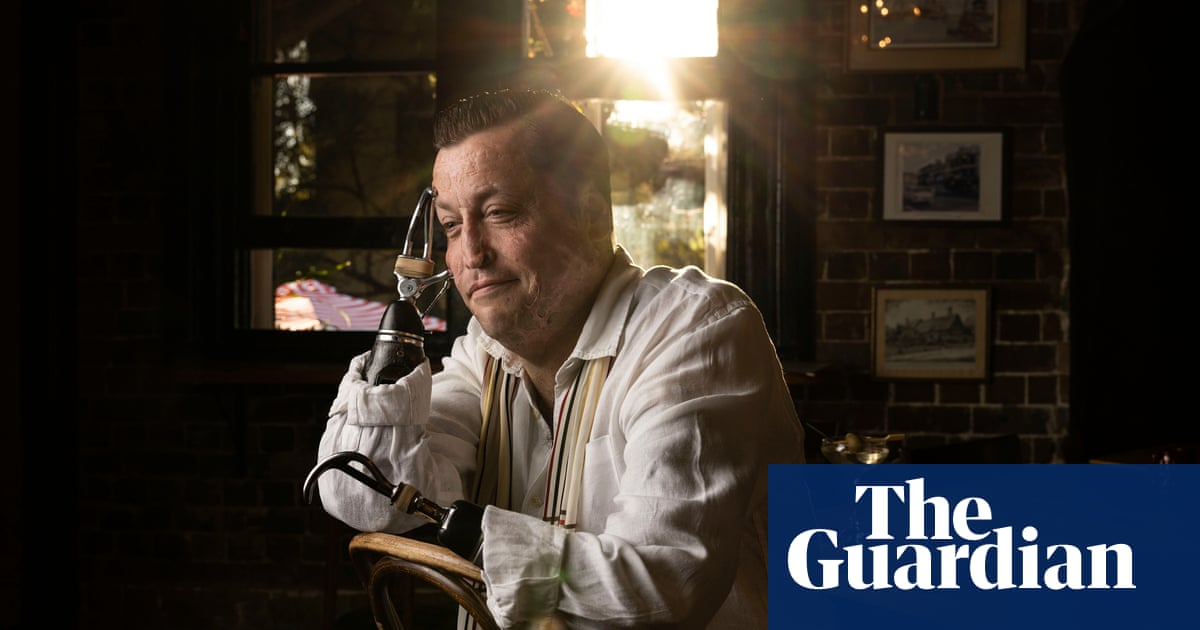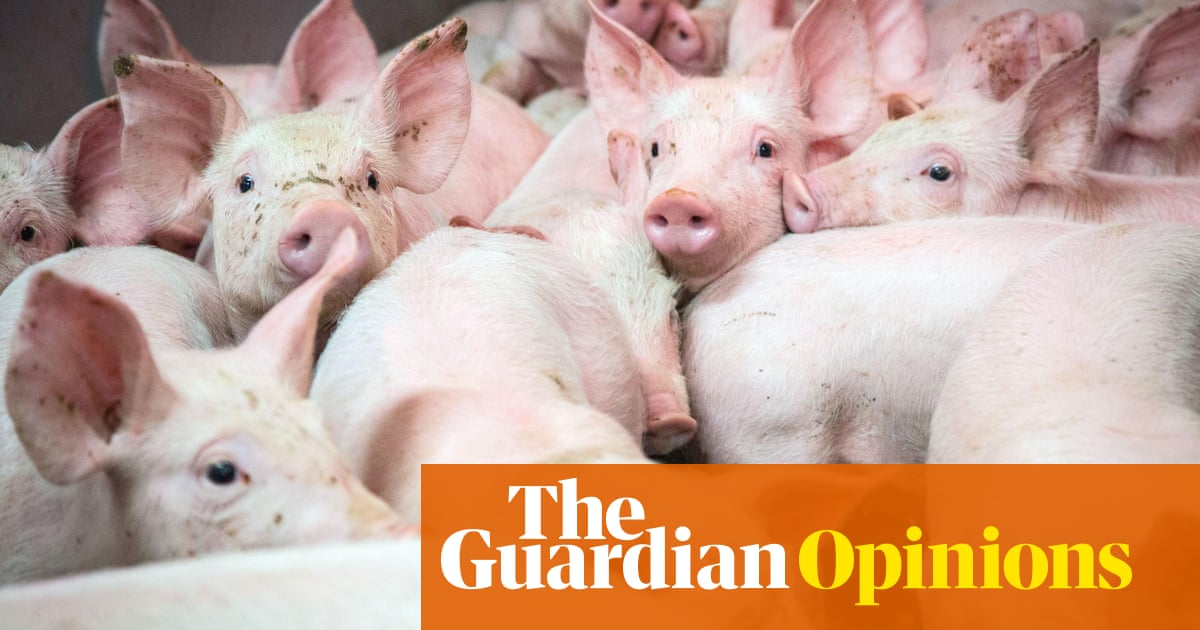
t’s 5am on a frigid August morning and Trevor Monson is at the wheel of his 16-wheeler truck on the road out of the Riverina town of Griffith, New South Wales. It’s still pitch black, his headlights searching down long kilometres of straight roads.
Trevor and his son Jonathan have been on the road since 11pm the night before, when they set off from their home town of Robinvale in north-western Victoria. Pulling into an already-heaving truckers’ and tradies’ pitstop for a breakfast of coffee and cheese sandwiches, they check the precious cargo boxed up in hives piled high on the truck. The inhabitants are still snoozing, cuddled up in clusters to protect themselves from the windchill. They’re seasoned travellers by now, having spent the past five weeks journeying from Queensland to Victoria to NSW.
While local human populations have been largely confined to their homes and neighbourhoods through this year of pandemic shock, the 15 million honeybees onboard the Monsons’ truck are among 1.5 billion bees that have been travelling thousands of kilometres around the country as part of the annual pollination season. Each August these creatures – classified as “livestock” by the tax office – are shipped throughout eastern states to service the centres of Australia’s rapidly expanding $1bn almond industry as part of the country’s largest livestock movement.
“You can only shift bees at night,” Trevor explains over the chug of the engine hurtling forward in the dark.
Jonathan adds: “When the sun comes up it’s like they’ve started their normal day. They start orienteering to see where their house has been put. They’ll work out where the almonds are and then fly back to tell the rest of the hive where they’ve found flowers.”
The Monsons don’t own these bees. The father-son team are bee brokers who serve as the middlemen between beekeepers scattered throughout the eastern states and almond growers, facilitating the rental of hives for almond pollination, representing beekeepers to ensure their hives are safe and, when required, chauffeuring them from one job site to the next.
Trevor and Jonathan have spent months liaising with almond growers to determine how many hives they require and ensuring they follow strict rules around spraying chemicals while the bees are visiting. They are also in close communication with all their beekeepers, frequently seeking updates on how the hives are going and how many bees will be strong enough to go to work.
When pollination season kicks off with the forming of the first buds in late July, the Monsons launch into action. First, it’s a mad rush to audit the bees, a process that involves checking 10% of each beekeeper’s hives to ensure the growers are getting what they paid for. As blossoms begin to burst through, Trevor and Jonathan are on the road nonstop, driving thousands of kilometres across NSW and Victoria to meet all their contracted beekeepers, instructing them on distributing their hives or hauling them themselves.
After the bees have been placed in the orchards, they are left to get on with the job for the critical, magical three-week window of blossoming and pollination. They are then picked up and often taken to other almond farms with later flowering varieties or to canola crops, to do it all over again.
Hiring and mustering 112,000 hives a year ranks the Monsons as the largest bee brokers in the world. While the family has a long history working with bees – Trevor’s great-grandfather kept hives in north-west Tasmania, and his father in Robinvale, Victoria – it is the colossal expansion of the almond industry in the last 15 years that can be credited for their business’s pivot into bee brokerage.
For the Monsons and the beekeeping industry in general, as for so many others, 2020 has been a shocker. Years of drought combined with a calamitous bushfire season have meant there has been high anxiety focused on whether the bees would be numerous or strong enough to do the job this year.
With global pressures on bee populations mounting, combined with scientific evidence backing predictions that droughts will worsen, the future of Australia’s almond industry is plagued by uncertainty and controversy. The industry has long had its critics, who argue that the demands almond crops place on precious water supplies are unsustainable and are driving up the price of water for other irrigators. Nonetheless, the industry has continued its trajectory of rapid expansion, triggering concerns about the environmental consequences of industrial-scale pollination.
The Black Summer of 2019-20 has raised the stakes. The eucalyptus trees that are endemic to Australia are a culinary paradise for bees – a natural source of food and protein that beekeepers rely on, with some buying permits for their bees to roam over up to 100 sites a year. But with wildfires wiping out more than 17m hectares of bush in one season, urgent questions are being raised about the management and restoration of surviving native forests, with the spotlight now shifting to the bee industry’s ecological footprint in these areas.
‘Contented belly, contented bee!’
Forty minutes south-west of Griffith, Trevor pulls the truck off the highway into a blink-and-you’ll-miss-it entrance of an almond farm, his cargo still snug in their hives.
The early dawn reveals row upon row of almond trees adorned with tiny white flowers, still folded closed waiting for the warmth of the rising sun. It’s a race against the clock to distribute the hives around the orchards, a task made all the more difficult by the effects of soaking rains, that make it almost impossible to manoeuvre the truck into position. Rain has delayed much of this year’s bee migration, which coupled with Covid-19 border closures has meant headaches for much of the industry.
The hives need to be carefully placed in a sheltered position to prevent “drift”, when wind slowly pushes returning worker bees into the wrong hives, so the hive the farthest down the line ends up chock-a-block full of bees.
Once the truck is in place, Jonathan starts methodically unloading the boxes that are stacked up in fours, using a forklift to place them evenly on the soil.
“Impressive, isn’t it?,” Trevor says. “See the bees hanging out here, just waiting to wake up. Just sleeping, huddled up because of the cold just trying to keep warm.”
While Jonathan unloads, Trevor gathers some nearby shrubbery, stuffing it into an antique-looking steel tin called a “smoker”. This is used to simulate a bushfire to encourage the bees to fill their bellies with food, as they would do in the wild.
“They think it’s a bushfire, so they run out and get a gut full of honey before they leave. Contented belly, contented bee!” Trevor says. “But you can imagine what my wife says when I get home … ‘You stink.’”
The rhythmic puff puff puff of the smoker breaks the stillness of the morning, the plumes of smoke billowing around the truck making Trevor briefly indistinguishable.
When the mercury rises these flowers will open, and the bees will be off, flying from tree to tree searching out the cyanide protein treat that gives these nuts their bitter flavour. Lethal for humans in large quantities, it’s extremely moreish to bees.
As the bees move between the rows of male and female trees, their fuzzy bodies rub against the pollen, grooming it down to “pollen baskets” on their legs. As they roam, the pollen of one cultivar is transferred to the stigma of another, enabling pollination to occur.
It’s a lovely scene but beneath it lies a festering decade-long controversy that has consumed communities around Robinvale, on the Victorian side of the border, where about 80% of almond crops are concentrated. Now the same tensions are playing out in the NSW Riverina, as more and more of the landscape is covered in rows of white, plastic casings protecting baby almond trees.
Due to uncertainty surrounding water supply, the Australian Almond Board placed a moratorium on all new plantings in Victoria’s Sunraysia district, a policy some local Riverina growers believe should now be considered in their region.
A Griffith almond grower, Eugene Dole, has major concerns about the future of the industry as younger trees start to mature. He manages a farm where some of the trees are 40 years old, the previous owner having been one of the pioneers of the almond business in the region. But Eugene is concerned that much has changed since those early plantings.
“There’s a big issue of water security for these plantings, if there’s a change in the commodity prices of water and almonds,” he says. “With the rapid expansion of this industry here I struggle to think of what’s going to happen in the future.”
After a record harvest last year globally the international almond price declined by more than 30%. The supply glut in the nut market suggests that this bubble may be already starting to burst.
Chemical dangers
The byproduct of the almond business is the bonanza that it has provided to beekeepers, with some giving up on producing honey altogether in the face of gargantuan demand for pollination services.
“Traditionally beekeepers did a bit of both but some are now targeting pollination, especially the guys from Queensland,” Jonathan says. “We’re trying to convince more beekeepers to expand their businesses or forget about honey and start targeting pollination. It’s definitely shifted already.”
Over the past decade of rapid expansion, the almond industry has given beekeepers a reliable spring cheque. It’s big money, with some larger beekeeping operations earning up to $1m a year from almond pollination alone.
The rental price of bees jumped 20% this year, as almond growers faced competition from other crops including avocados, macadamias and blueberries – which flower at the same time. Despite this, the biggest competition for pollination services is between almond farmers, who continue to push up the price for hives.
But the profits come with a serious catch. With bees threatened globally by climate change, agricultural chemicals and diseases including the devastating Varroa destructor mite, scientists are extremely concerned about the capacity of bees to continue to meet agriculture’s future needs.
Use of pesticides, herbicides and fungicides are part and parcel of almond production, posing threats to the health and safety of bees. Although growers are required to not spray while the bees are doing their work, or to only spray at night, there’s no guarantee neighbouring farms aren’t using chemicals. As bees can fly up to 5km from their hives on any given day, there’s high anxiety for beekeepers, knowing that their herd may die if this occurs.
“Beekeepers are very concerned about insecticides,” says Dr Nadine Chapman from the University of Sydney’s Behaviour, Ecology and Evolution (Bee) Lab. “That’s why not every beekeeper goes to pollination, because they’re worried about their effects.
“It’s not just what’s being sprayed on the one crop, it can be surrounding different crops because when you combine some of these chemicals they can have synergistic effects.”
Adding to these concerns are cycles of drought and fire. This year the lack of natural pollen resources forced beekeepers in many regions to move to industrialised hand feeding of sugar syrup to keep their bees alive.
But hand feeding sugar to bees is not a sustainable solution, as bees – like humans – become unhealthy if they become too reliant on a sugary diet, leaving them susceptible to diseases. Beekeepers will also take a financial hit this year; they’re unable to sell honey produced from this process as it is in fact not technically honey at all.
Snowy Mountains Honey’s beekeeper Lex Casey is among those who reluctantly had to take desperate measures during a year that has been the worst he’s experienced in more than 20 years in the business.
“Around 70% have been hand fed this year.” he says. “You can’t use the honey from that either because it’s not honey. The profit has really been affected.”
On top of this, bee scientists are concerned about the long-term impact of commercial-scale pollination services on the health of bees. Like humans, bees require diversity in their diet and placing them in monocultures disturbs their nutrition levels and impacts their brain functioning, making them more susceptible to diseases. While almond orchards provide a superabundance of food, this type of feeding has been likened to humans eating only chocolate, sardines or parsnips for a month.
Chapman is part of a team working to combat these threats to bee populations by breeding a more resistant type of bee.
“We are measuring disease resistance, colony strength, pollination traits and honey production,” she says. After finding and selecting the desired traits, these scientists choose the most suitable queens for breeding in the hope of creating stronger and larger colonies.
But the prospect of a stronger honeybee is not good news for all. The European honeybee used in commercialised beekeeping operations overseas and in Australia is an introduced species that outcompetes native bees – in size and sheer numbers – threatening endangered species of native bees, which are already struggling to survive in a climate changed world.
“Whenever you take a hive of honeybees into a native area you’re taking at least 50,000 mouths to feed which is just massive competition with the native insects, bees, small birds and other pollinators,” says a native bee expert, Dr Megan Halcroft.
The pressure on native species is mounting this year after lobbying from the honeybee industry to increase the number of native areas they are permitted to take their bees for foraging after the summer bushfires. This is alarming for bee experts, who say the impact on native species could be devastating.
“We’ve had populations of native bees and other fauna that have just been wiped out along with the trees and these little pockets of vegetation are so important for the survival of the species,” Halcroft says. “If you add honeybees into the mix they’re just not going to survive.”
Having unloaded and distributed 300 hives, it’s late afternoon when Trevor and Jonathan Monson hit the road out of Griffith, heading home to Robinvale.
While the stresses of this year’s season are starting to ease, the myriad threats to the future of these creatures is something that weighs heavily on their minds. The number of bees that will be needed for almonds into the future is Trevor’s major concern. For Jonathan, it’s the threat of pests and disease, and access to native resources.
But the resilience of the industry through adversity allows him to be cautiously optimistic.
“We’re getting it from all directions,” Trevor says. “But we’re a resilient mob. You have to be to survive.”
This resilience that is endemic to beekeepers might also be the key to the survival of their hives, an instinctive characteristic which could help them to adapt.
Still amazed that these creatures are able to travel hundreds of thousands of kilometres – from the balmy temperatures of the Sunshine Coast to a frosty Victorian winter – seemingly unfazed, Trevor believes that these bees will be triumphant against future adversity.
“You never stop learning about bees, they’re just incredible,” he says. “Man doesn’t like it because the bee is smarter than what he is. If you get called a bee-brain that’s actually quite a compliment!”












